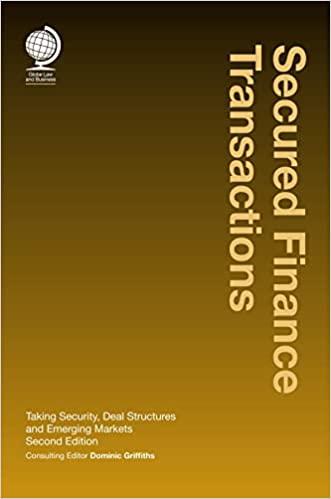Question
Bond price elasticity Suppose you want to compare the price sensitivity of two 10-year bonds. Bond A Has a par value of $1,000. Has a
Bond price elasticity Suppose you want to compare the price sensitivity of two 10-year bonds. Bond A Has a par value of $1,000. Has a coupon rate of 5 percent with coupon payments made annually. The initial required rate of return, k, is 10 percent. Bond B Has a par value of $1,000. Has a coupon rate of 10 percent with coupon payments made annually. The initial required rate of return, k, is 10 percent. Suppose the producer price index indicates that prices may soon decrease by as much as 1.5 percent, which results in an investors required rate of return on a bond to decrease to 6%. Using this information, fill in the values for the percentage change in bond price, percentage change in k, and bond price elasticity for each bond in the table. Bonds: Initial Price of Bonds when k=10% Price of Bonds when k=6% Percentage Change in Bond Price Percentage Change in k Bond Price Elasticity (Pbe) Bond A $692.77 $926.40 Bond B $1,000.00 $1,294.40 Now suppose that instead the producer price index indicates that prices may soon increase by as much as 1.2 percent, which results in an investors required rate of return on a bond to increase to 11%. Using this information, fill in the values for the percentage change in bond price, percentage change in k, and bond price elasticity for each bond in the table. Bonds with a Coupon Rate of: Initial Price of Bonds when k=10% Price of Bonds when k=11% Percentage Change in Bond Price Percentage Change in k Bond Price Elasticity (Pbe) Bond A $692.77 $646.65 Bond B $1,000.00 $941.11 Based on the calculations, it can be said that the bond price elasticity is in each scenario, which reflects relationship between interest rate movements and bond price movements. The price elasticity of bond B with a required rate of return of 11 percent can be interpreted as: A 1 percent increase in interest rates leads to a 0.666 percent decrease in the price of the bond. A 1 percent increase in interest rates leads to a 0.589 percent decrease in the price of the bond. A 1 percent increase in interest rates leads to a 0.589 percent increase in the price of the bond. A 1 percent decrease in interest rates leads to a 0.589 percent decrease in the price of the bond. Based on the calculations, it can be said that a bond with a low required rate of return is price sensitive than a bond with a high required rate of return.
Step by Step Solution
There are 3 Steps involved in it
Step: 1

Get Instant Access to Expert-Tailored Solutions
See step-by-step solutions with expert insights and AI powered tools for academic success
Step: 2

Step: 3

Ace Your Homework with AI
Get the answers you need in no time with our AI-driven, step-by-step assistance
Get Started


